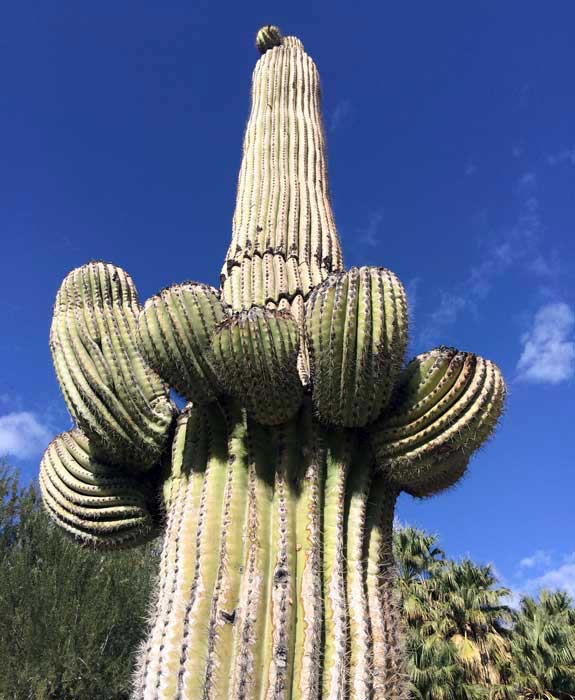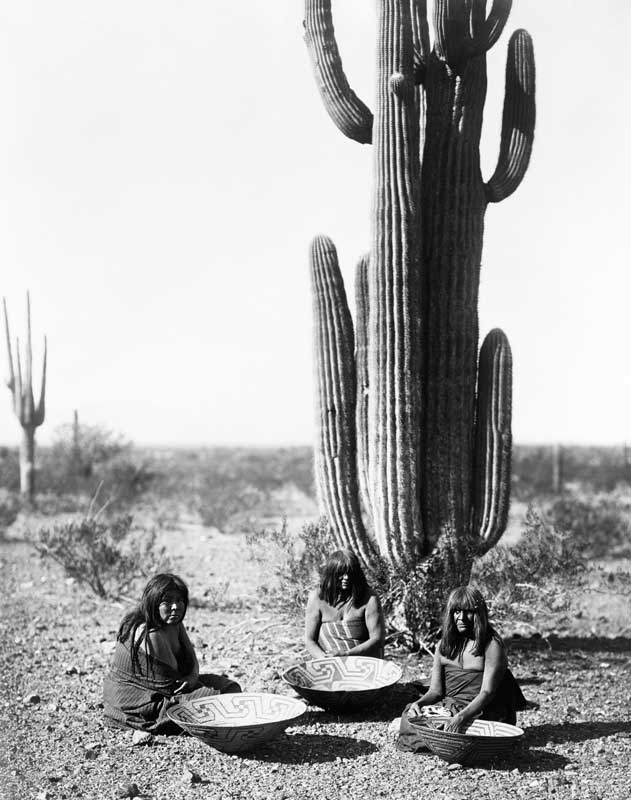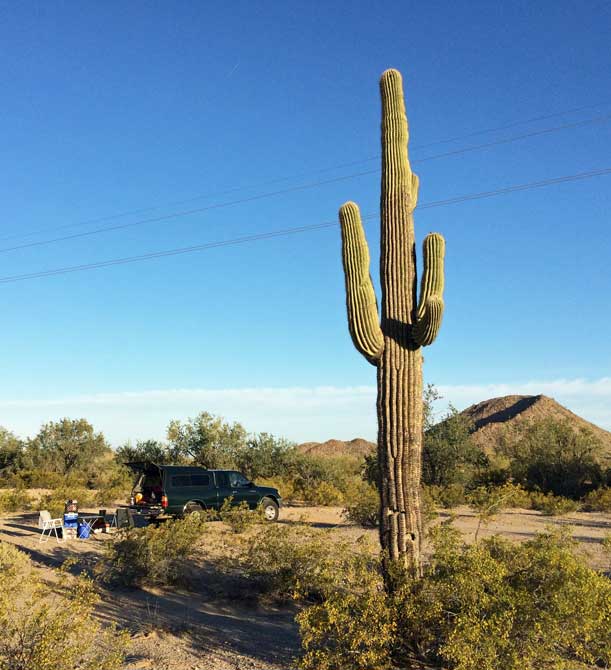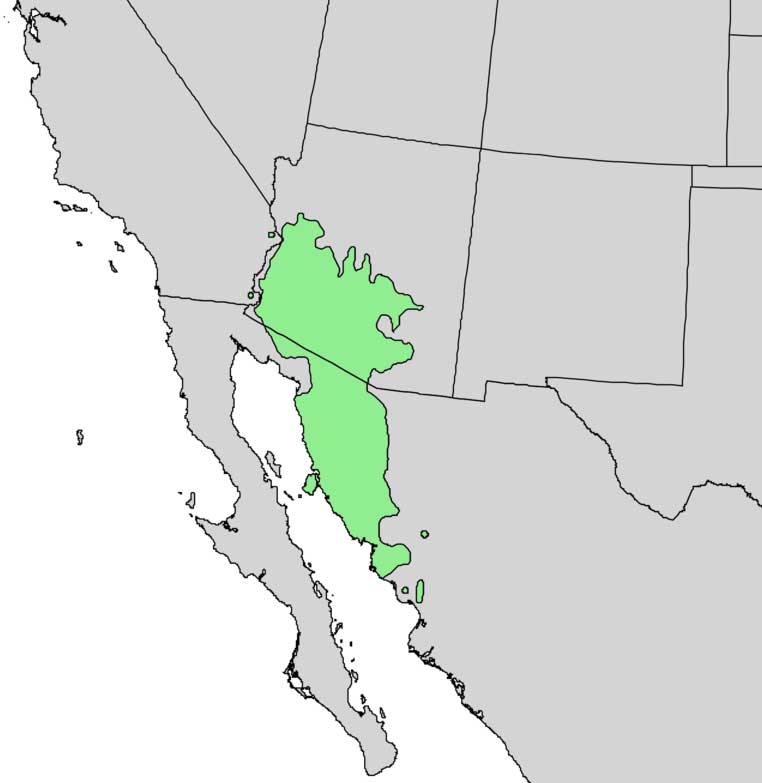Ethnobotany of southern California native plants:
Saguaro (Carnegiea gigantea)

A prominent, 20 foot saguaro trunk growing in Imperial County, California.

credit: Sharktapus CC BY-SA 3.0, via Wikimedia Commons
Edward Curtis photograph (1907) of Maricopa women gathering saguaro fruits.

Healthy saguaro in the Sonoran Desert National Monument, near Gila Bend, Arizona
Saguaro (Carnegiea gigantea)
The Saguaro cactus is the iconic, enormous cactus that is often seen in Western movies. This species can grow up to 70 feet tall. It is native to the Sonoran Desert in Arizona, parts of Imperial County in southern California and the Mexican State of Sonora.
The Saguaro is the only species in the Carnegiea genus. Its scientific genus name is a tip of the hat to the American industrialist, Andrew Carnegie. The Carnegie Institution established the Desert Botanical Laboratory in Tuscon in 1903, so the ‘Carnegiea’ name honors that endowment.
Saguaro cactus live for a long time, as one might expect by their grand size. The larger saguaros are often between 60-90 years of age. Structurally, the cactus is supported by columnar ribs that run the length of its trunk. These ribs allow the cactus to grow to such immense size.
Saguaro flowers, appearing between April and June, are whitish and open at night. The nocturnal flowers produce sweet nectar during the evening for the benefit of pollinators. Throughout the evening and well into the morning, saguaro flowers are visited by the lesser long-nosed bat, honey bees, white-winged doves, hummingbirds, orioles and woodpeckers. These airborne creatures arrive to enjoy the sugary nectar – but in the process, they are inadvertently helping the saguaro distribute its pollen. In this manner, the cactus successfully fertilizes and ensures creation of the next generation of saguaro.
Saguaro fruits
In June, these flowers fade and ruby red fruits emerge and ripen. These large fruits are sweet, fleshy and packed with thousands of seeds. Local people in the Sonoran Desert have adored these fruits for millennia.
The fruits tend to grow at the top of these very tall saguaro branches. So, if you want to pull one down, you need a very long pole.
Native American use of the saguaro cactus
Tohono O’odlam
The Tohono O’odlam people have enjoyed a long history with this stately cactus. The giant saguaro was so important to their lives, that they marked the beginning of their calendar year by the harvest time of the saguaro fruit.
The Tohono O’odham collected fruits and ate them raw. They also dried the fruits and ate them later as sweets. Saguaro ribs were broken off from a dead cactus, then these long ribs were used to help pluck a prized fruit from the top of the plant.
Additionally, the fruit pulp was mashed up – then spread on other foods as a syrupy jam.
These people prepared a drink from the fermented saguaro fruit. This alcoholic drink is imbibed at the beginning of the summer season as a ceremonial offering to ensure a bountiful harvest and good rains.
Saguaro seeds were laid out to dry in the hot sun. These parched seeds could then be stored. Later on, the seeds were ground to make meal cakes.
Spines from the saguaro cactus served as sewing needles for the Tohono O’odham.
The strong ribs of this cactus also provided construction material. If you visit the Mission San Xavier del Bac near Tuscon, Arizona, you can see roofing material that is built from saguaro ribs.
Pima
The Pima collected ripe fruit for food. They dried the fruit pulp and rolled the pulp into balls. These fruit balls were then boiled, fermented and used to make saguaro wine. The Pima also ground the seeds into meal and then baked this meal to make bread.
Pima people used the saguaro as a gynecological aid, to encourage breast milk production after childbirth.
Sections of dead saguaro ribs served as splints for broken bones.

Natural distribution map for Carnegiea gigantea (Public Domain)
Resources:
Curtin, L. S. M. 1949 By the Prophet of the Earth. Sante Fe. San Vicente Foundation (p. 53)
Hrdlicka, Ales 1908 Physiological and Medical Observations Among the Indians of Southwestern United States and Northern Mexico. SI-BAE Bulletin #34:1-427 (p. 257)
Please return to our main Ethnobotany of southern California page.
On our main ethnobotany page, we present a clickable list of the southern California native plants that became a part of the culture of Native Americans and early European settlers. These plants were used for medicine, food, shelter, drink, tools and art.
Warning: The information about plants on this website is intended for general educational purposes only. The author of this website accepts no responsibility for problems arising from the user’s misidentification, misuse, or use of plants. Please read the full TERMS associated with this website.
